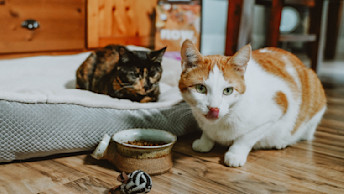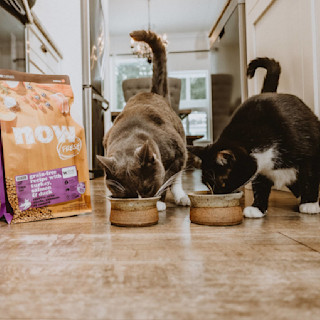February 20, 2025
How to Switch Cat Food Safely

Switching your cat’s food can be a smooth process with the right steps. Whether you’re upgrading to a premium diet or addressing dietary needs, gradual transitions are key to keeping your feline happy and healthy. Here’s everything you need to know about how to switch cat food safely.
Why Gradual Transitions Matter
Cats have sensitive stomachs, and abrupt changes in diet can lead to digestive upset. A slow transition helps their system adapt to new textures, tastes, and nutrients without stress.
A Step-by-Step Guide to Switching Cat Food
Follow this 10-day-long transition plan to ensure a seamless switch:
Day 1 & 2: Feed 80% of your cat’s old food with 20% of the new food
Day 3 & 4: Feed 60% of your cat’s old food with 40% of the new food
Day 5 & 6: Feed 40% of your cat’s old food with 60% of the new food
Day 7, 8 & 9: Feed 20% of your cat’s old food with 80% of the new food
Day 10 & so on: Feed 100% new food
If your cat resists or shows signs of digestive issues, slow the pace of transition.

Tips for a Successful Change
Monitor Your Cat’s Reaction: Keep an eye on their appetite, energy levels, and litter box habits.
Stick to a Routine: Cats thrive on consistency. Offer meals at the same times each day.
Choose the Right Food: Ensure the new diet matches your cat’s life stage, health needs, and preferences.

Our Recommendation
Food Tailored to Your Cat’s Life Stage
Tailored to kittens, adult and senior cats, our premium cat food recipes provide specialized nutrition to support their health and wellbeing at every age.
View cat foodWhen to Consult a Vet
If your cat refuses to eat the new food after several attempts or experiences vomiting, diarrhea, or other symptoms, consult your veterinarian. They can help identify potential issues and suggest alternatives.
In Conclusion
By following these steps, you’ll keep your cat comfortable and their digestive system happy as they adjust to their new food.


